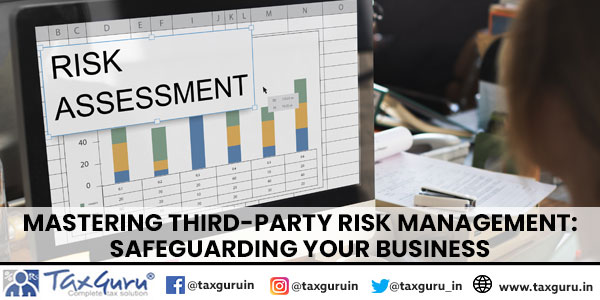Third-party risk management (TPRM) is the process of identifying, assessing, and mitigating risks associated with an organization’s use of third-party providers, suppliers, contractors, or partners. Third parties can pose a variety of risks to businesses, including operational, financial, reputational, legal, and compliance risks. TPRM aims to enable organizations to effectively manage these risks and protect their interests while leveraging third-party capabilities and resources. This article explores the concept of TPRM, its significance, and the key steps involved in mitigating associated risks.

The TPRM process typically includes the following steps:
Third Party Identification: This includes the identification of all third parties your organization works with, such as vendors, suppliers, service providers, contractors, and partners.
Risk assessment: Once third parties are identified, organizations conduct risk assessments to evaluate the potential risks they pose. This evaluation may consider factors such as the criticality of the services provided by the third party, the nature of the relationship, the level of access to sensitive data and systems, and the third party’s security and compliance posture.
Due Diligence: Organizations conduct due diligence on third parties to gather information about their capabilities, financial stability, reputation, security practices, and compliance with relevant regulations and standards. Contractual controls: Organizations enter into contractual agreements with third parties to define expectations, responsibilities, and obligations regarding risk management, security, privacy, data protection, and compliance. These agreements may include provisions such as service level agreements (SLAs), data protection provisions, indemnification provisions, and audit rights.
Ongoing monitoring and management: TPRM is an ongoing process rather than a one-time activity. The organization continually monitors its relationships with third parties to identify and address new risks, changes in the third party’s operations or circumstances, and compliance with contractual obligations.
Risk mitigation: Based on the results of risk assessment and due diligence, organizations implement risk mitigation strategies to reduce the likelihood and impact of identified risks. This may include implementing additional security controls, engaging third parties to conduct security assessments or audits, and developing contingency plans to address potential disruptions. Incident response and remediation: In the event of a security breach, non-compliance, or other adverse event involving a third party, your organization can quickly respond, mitigate the impact, and take steps to resolve the resulting issue.
Effective TPRM helps companies proactively manage and mitigate risks associated with third-party relationships, protect their assets and reputation, and maintain stakeholder trust. It is an essential part of an organization’s overall risk management and cybersecurity strategy.
Conclusion: Third-party risk management is not merely a reactive measure but a proactive strategy to safeguard business interests. By identifying, assessing, and mitigating risks associated with third-party relationships, organizations can protect their assets, reputation, and stakeholder trust. Implementing robust TPRM practices is integral to a comprehensive risk management and cybersecurity framework in today’s dynamic business environment.





